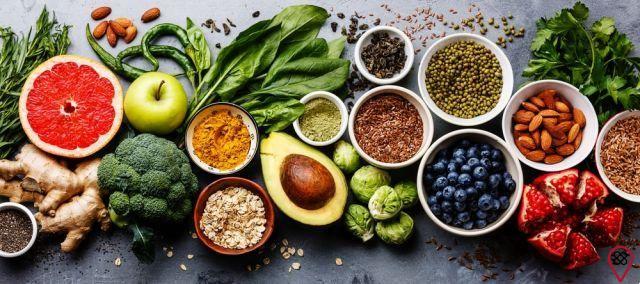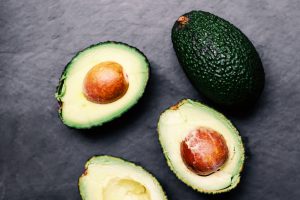If you are one of those people who are always looking for a healthier lifestyle, the ideal is to bet on a natural diet that, at the same time, balances your body. This is where the Ayurveda diet, also known as the Ayurvedic diet, comes in.
In this article, you will learn all about this diet and how to find the ideal diet for your body, according to Ayurveda, in addition to checking out several tips on how to adopt it without complications. Follow up!
What is the ayurvedic diet
The Ayurvedic diet advocates a balanced diet according to our Ayurvedic biotype – called dosha –, which is classified according to our physical, emotional and mental characteristics. We'll talk about doshas later.
Ayurveda is considered the oldest known health system. Of Sanskrit origin, it means "science of life" or "knowledge of life" (Ayu: life; and "veda": knowledge). This philosophy defends that each body has its particularities and works in a systemic way.
If our biological structure is formed by what we ingest, then our balance starts “with the mouth”. As each body is a body, it is necessary that our food is adjusted according to our needs. With the proper diet, the benefits will be felt not only in our body but also in our mind.
Benefits
For starters, the Ayurvedic diet is already highly beneficial simply because it is based on natural foods, avoiding industrialized foods and chemical additives, as well as alcoholic beverages or stimulants (such as those based on caffeine), white flour , refined sugar, among others.
With a menu designed according to our physical characteristics, in harmony with the specific metabolism of each one, this diet has therapeutic and preventive properties, providing physical and mental well-being.
Among other benefits of this diet, we can highlight an improvement in blood and lymphatic circulation, relaxation and muscle strengthening and increased immunity. Not to mention that we are in a better mood, in a better mood, with better sleep and digestion and more lush skin and hair. Healthy weight loss is a consequence too.
For Ayurveda, each food has the ability to contain a different energy, being a source of vital energy - which is called prana, according to this philosophy. Therefore, a balanced and properly prepared diet is the key to good holistic health. Still, in imbalance, the same food can be harmful to our body.
Where to start eating in Ayurveda?
First of all, you need to know that the only person who can recommend some foods and herbs in this diet is an Ayurvedic doctor. However, you can start looking for a balanced diet based on Ayurveda, and it's not difficult to get started.

For that, you need to find out what your dosha is – that is, your Ayurvedic biotype. Thus, you will be able to know which foods to invest in, to start this journey in search of good global health.
Know your dosha
As already stated, Ayurveda views general illness as a generalized imbalance. Our imbalance occurs according to our doshas, which are basically a combination of the five fundamental elements – Aakash (Space), Teja (Fire), Prithvi (Earth), Vayu (Air) and Jala (Water).
There are three existing doshas: Vata, Piita and Kapha, and we have them all in different combinations in our organism, some being more predominant than others. See below which characteristics you fit in. If you want an even more accurate diagnosis, consult an Ayurvedic doctor.
the three doshas
Vata – Ruling Elements: Air and Space
“Vata” in Sanskrit means “that which moves”. It is associated with everything that moves in our body – for example: blood circulation, muscle and neuronal activities, breathing, creativity. Vata puts energy in motion.
People with this predominant dosha are always moving and communicating. They have a small frame, not very muscular and with a fast metabolism. The imbalance of this dosha brings these people tiredness, insomnia, weakness, constipation and weight loss, as well as anxiety.
Pitta – ruling elements: Fire and Water
"That which digests things". This is the meaning of Pitta, the dosha responsible for transformations in the organism. It governs the digestive system and hormones. Pitta aims to generate energy. Mental clarity, body temperature regulation and visual perception are also responsibilities of this dosha.
People with a Pitta predominance are very physically active and restless. They hardly feel cold, they have a great appetite and a lot of energy, being able to gain lean mass without great difficulties. In imbalance, they can experience intolerance, gastritis, acne and excessive thirst, in addition to irritability.
Kapha – Ruling Elements: Earth and Water
Meaning "that which holds things together", Kapha's function is to regulate energy. It is this dosha that is responsible for the support and nutrition of the nervous system, as well as for the lubrication of the joints and the digestive and respiratory tracts.
Those who have the predominance of this dosha have a strong and broad complexion, and may even be obese. In disharmony, this dosha brings weight gain, poor digestion and excessive tiredness. It can also cause respiratory problems and excess mucus production, as well as depression, sadness and lack.
Foods for each dosha
Now that we know what the main characteristics of doshas are, we need to figure out which foods each one should prioritize and which ones should be avoided.
Wadding
Prefer: salty, sweet and acidic flavors; hot and oily foods such as soups, stews and creams; cooked cereals and vegetables; cinnamon, ginger and herbal teas such as chamomile and lemongrass; Coconut Water; tofu; brown sugar, brown sugar and honey; nuts; fruits such as bananas, cherries, grapes, lime oranges, plums, papayas, melons (preferably ripe); chicken and fish (organic); olive oil and sesame and avocado oil; organic milk.
Avoid: bitter and astringent flavors; dried fruits, raisins, apples, pears (raw) and watermelon; raw foods; cold/frozen preparations; dried vegetables; sprouts; dry cereals such as granola, rye and millet; ice cream, yogurt; pork and beef; stimulating drinks, such as mate, coffee, chocolate and black tea; sweets, sugar and sweeteners like saccharin and aspartame.
Pitta
Prefer: sweet, bitter and astringent taste; fruits such as cherry, blackberry, date, grape, raisin, fig, mango, watermelon, avocado; vegetables such as spinach, beets, squash, asparagus, broccoli, lettuce, carrots, cauliflower, celery, parsley, chives and cilantro; cereals like quinoa, oats, granola and wheat; legumes such as beans and soybeans; ghee, tofu and white cheeses; freshwater fish and organic chicken; spices such as bay leaves, turmeric and cumin; honey, brown sugar, agave and sucralose; vegetable milks.

Avoid: pungent, sour and salty taste; oilseeds; Red meat; acidic fruits such as sour apple, lemon, orange, pineapple; yellow cheeses; eggplant, tomato, radish and spinach; spices such as garlic, onion, ginger, nutmeg, thyme, oregano and cloves; energy drinks and stimulants such as coffee, alcohol, acidic juices, black tea and green tea; refined sugar; honey and brown sugar (in excess).
Kapha
Prefer: spicy, astringent and bitter taste; vegetables such as cauliflower, spinach, tomatoes (cooked), lettuce, eggplant, broccoli, radishes and carrots; fibers; cereals such as barley, quinoa, tapioca, rice, wheat and rye; fruits such as apple, pear, peach, strawberry, raspberry, blackberry, fig and lemon; legumes such as beans, peas and lentils; goat's milk (hot and spiced) and vegetable milks; organic chicken and eggs; assorted condiments; coffee and black tea (no exaggeration), cinnamon, ginger and horsetail tea, green tea.
Avoid: salty, acidic and sweet taste; sweet fruits such as bananas, melons, dates, watermelon, papaya, coconut, avocado and grapes; cereals such as rice (both wholegrain and white) and wheat; beans; potato, pumpkin, cucumber and raw tomato; milk, butter and cheese; oilseeds; food of animal origin; refined salt (substitute with sea salt); olive oil and soy, coconut and sesame oils; cold drinks, soft drinks, alcohol; refined sugar and fructose.
Tips for choosing and preparing food
You've noticed that the food options for each dosha include lots of fruits and vegetables, but no ultra-processed foods, right? As we said above, industrialized food is completely outside the Ayurvedic diet.
But this diet goes even further: the ideal is to opt for organic and good food, preferably grown and produced locally. Vegetables without pesticides and meats free of hormones or other chemical substances should, therefore, be part of the menu of those who wish to follow this diet.
Be aware of the foods you can consume. You can use ghee butter in the preparation of the dishes and vary in the massalas (spice mixes). Be sure to include all the flavors indicated for your dosha.
Bonus: Ayurvedic tips for good nutrition
For Ayurveda, food is the basis of our health, our body and our soul. Although diet is the main factor for our general well-being, there are a number of attitudes we can adopt to complement the process.
But keep in mind that any diet requires the prescription and guidance of a nutritionist and an Ayurvedic doctor. Therefore, consider our tips as complementary measures to a specialized professional follow-up!
Here are some Ayurvedic tips for success if you decide to adopt this wonderful lifestyle.
— Try to wake up early – by 6:30 am at the latest.
— Do the physiological needs as soon as you get up, to start the day eliminating toxins.
— After the needs, proceed with the hygiene of the body. Also brush your teeth, cleaning your tongue with a metal scraper (silver for pitta; gold for vata; copper for kapha).
— Give yourself a relaxing massage, which will allow you to feel physically and mentally well-disposed. Count on the help of vegetable oils: from coconut to pita; from sesame to vata; from sunflower or olive to kapha.
— Engage in low-impact physical activities first thing in the morning. A good tip is Yoga, an activity closely linked to Ayurvedic.
— Eat only if you feel hungry. A light breakfast right after the routine of hygiene, relaxation and physical activities.
— Always try to have lunch at the same time (ideally between noon and 14 pm, when the digestive fire is at its peak). Lunch should be the main meal.
— Unlike lunch, dinner shouldn't be too plentiful. Eat something light, at least three hours before going to bed.
— Identify whether you are physically or emotionally hungry. Eating driven by emotions, in addition to creating a wrong relationship with food, can also result in unbalanced weight gain, favoring the emergence of diseases. The ideal is to take care of the psychological too.
— Respect the digestion time. You can do meditation, a light walk or even take a nap (as the Spanish do, the famous siesta). The body needs this time to carry out the process properly.

— Have a healthy sleep routine. Try to sleep at the same time every day. Try to create a "sleep ritual", so your body understands that it's time to go to bed. It is also important to sleep the appropriate amount of hours, as sleep is a period of regeneration of the body.
— Practice mindfulness when eating. Enjoy food and be present when eating. Avoid watching TV, reading or working while eating. This is a “sacred” hour.
— As we mentioned throughout the article, include techniques such as meditation, yoga, relaxation, mindfulness and breathing in your daily routine. This helps to maintain mental balance, calm and improves self-knowledge.
You might also like:
- Find out which diet suits your blood type
- Discover the alternatives if you don't want to go on a diet
- See what Yoga and healthy eating have in common
- Ayurveda: Are you Vata, Pitta, or Kapha?
- Calendar of signs: know which one is yours!
As you can see, it is not difficult to adhere to the Ayurvedic diet, as it is not something intangible or complicated. But it requires discipline and patience to get the desired results. But follow without pressure, don't see it as a goal, but as a proof of love for your body and mind. Your body is your temple, your home… it's the one that will take you all the way along your journey. So why not make this a journey of affection and self-knowledge, with a single possible destination: a healthier and more pleasant life?
And if you want to take the test to find out your dosha, check out our content on the topic. Oh, and don't forget to talk to your doctor and nutritionist!

























